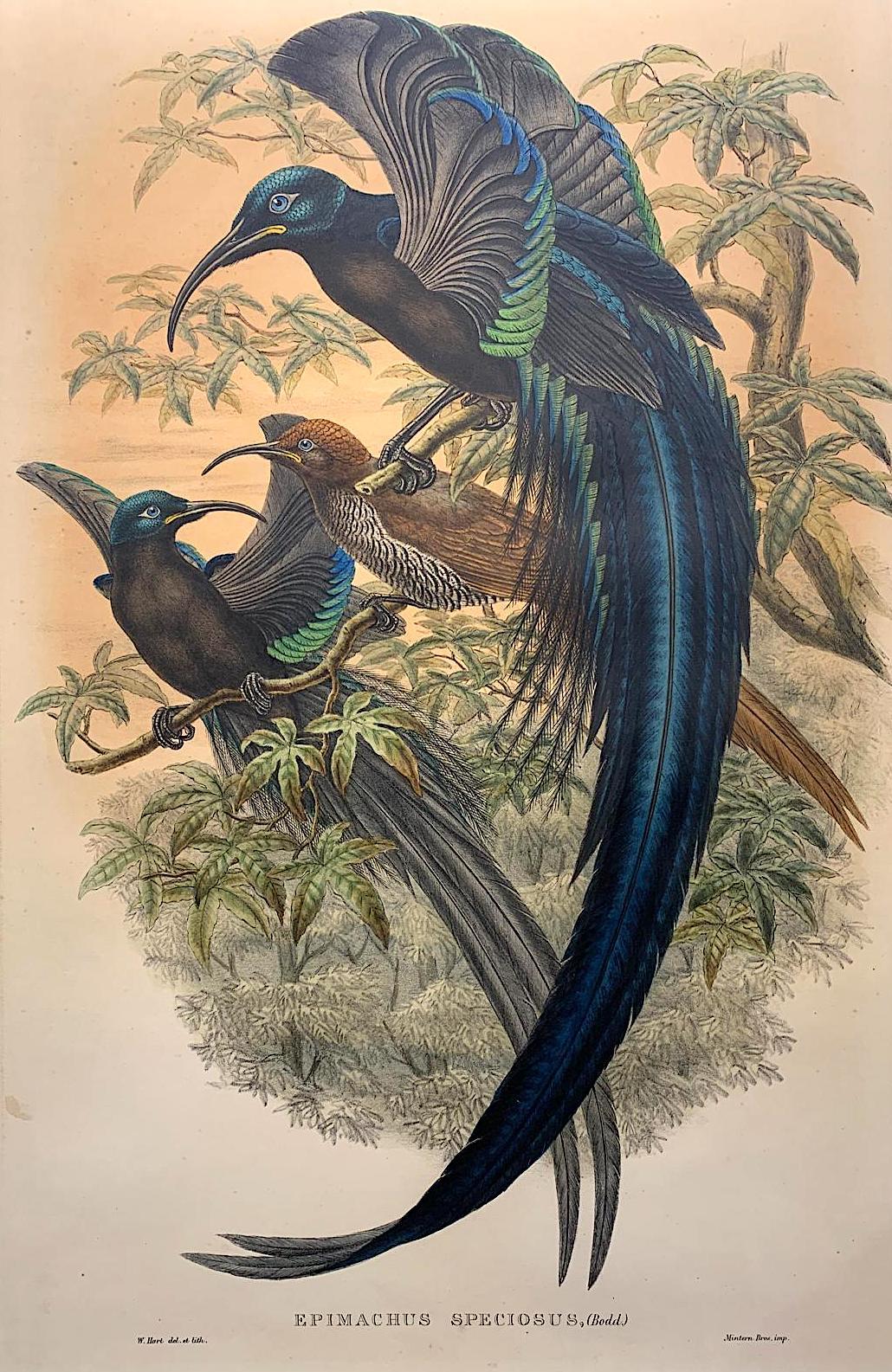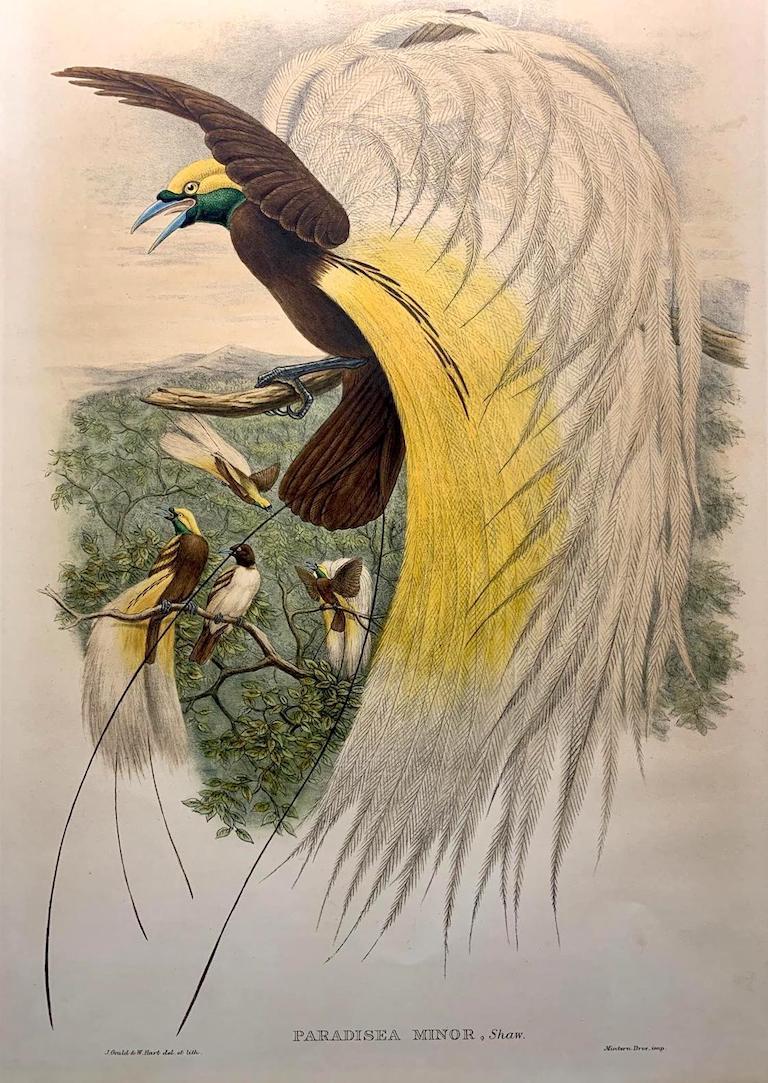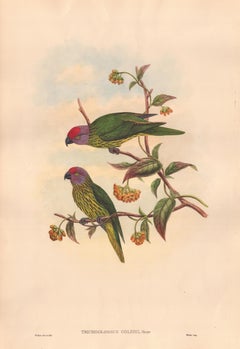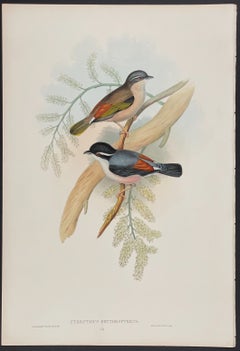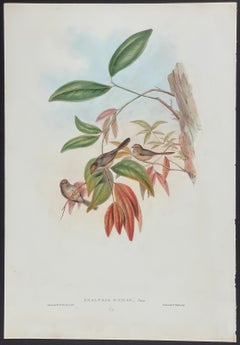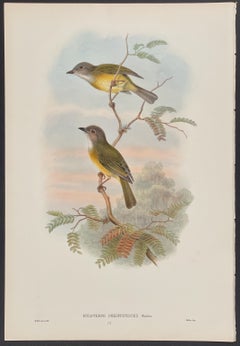John and Elizabeth GouldSuperb Trichoparadisea Gulielmi Bird lithographed by the ornithologists Gould1875-1888
1875-1888
About the Item
- Creator:
- Creation Year:1875-1888
- Dimensions:Height: 21.66 in (55 cm)Width: 13.94 in (35.4 cm)Depth: 0.04 in (1 mm)
- Medium:
- Movement & Style:
- Period:
- Framing:Framing Options Available
- Condition:
- Gallery Location:Milan, IT
- Reference Number:1stDibs: LU431315566602
John and Elizabeth Gould
Elizabeth was born on July 18th, 1804 in Ramsgate, England to a military family. She likely underwent training in drawing and botany from an early age as was typical of a woman of her class in Victorian England. She met John Gould through her brother, Charles Coxen, who was also a taxidermist. She married John Gould in January 1829, both 24 years old. Gould began her professional work-life by producing ornithological drawings intended to supplement John's ornithological writing in letters to colleagues. John encouraged her to learn lithography and had his collaborator Edward Lear teach her. Once proficient with the art form, she created illustrations from John's more rudimentary drawings. She designed, lithographed and painted more than 650 plates that appeared in A Century of Birds from the Himalaya Mountains, The Birds of Europe, A Synopsis of the Birds of Australia and many other texts.
- ShippingRetrieving quote...Shipping from: Milan, Italy
- Return Policy
More From This Seller
View AllLate 19th Century Naturalistic Animal Prints
Lithograph
Late 19th Century Naturalistic Animal Prints
Lithograph
Late 19th Century Naturalistic Animal Prints
Lithograph
Late 19th Century Naturalistic Animal Prints
Lithograph
Late 19th Century Naturalistic Animal Prints
Lithograph
Late 19th Century Naturalistic Animal Prints
Lithograph
You May Also Like
Early 18th Century Animal Prints
Lithograph
Late 18th Century Animal Prints
Lithograph
Late 18th Century Animal Prints
Lithograph
Late 19th Century Animal Prints
Lithograph
1830s Naturalistic Prints and Multiples
Lithograph
Mid-18th Century Naturalistic Animal Prints
Engraving
